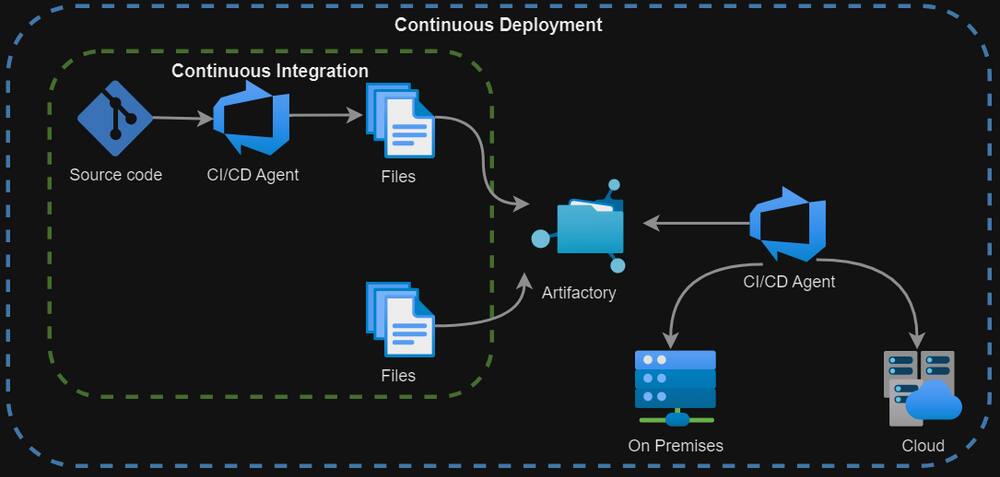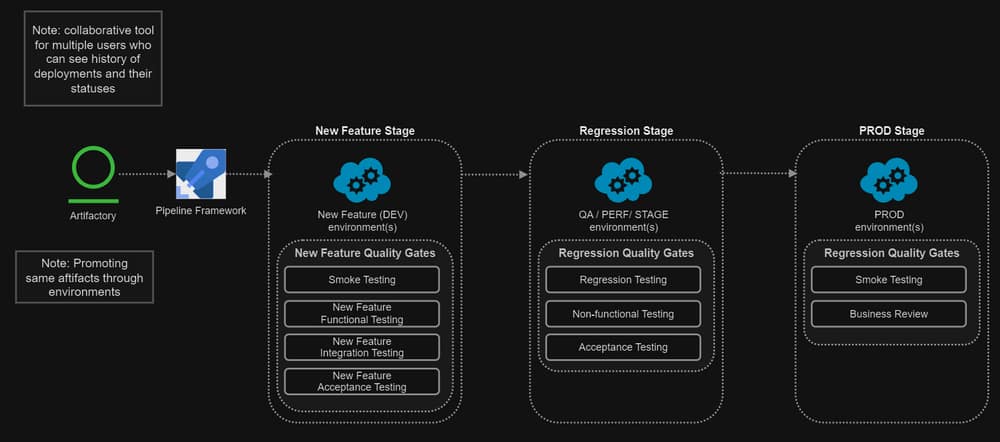Overview
Continuous Integration (CI) and Continuous Deployment (CD) are complementary practices that focus on automating the software delivery pipeline. CI involves frequently integrating code changes from multiple developers into a shared repository. CD extends CI by automatically deploying the integrated code to various environments, such as development, staging, and production.
Orchestration refers to the coordination and sequencing of tasks, stages, and actions within the CI/CD pipeline. It ensures that the different stages and steps are executed in the correct order and with the necessary dependencies.

Build Stage
The software delivery process relies heavily on the design and automation of the artifacts build process, which encompasses several stages and incorporates quality gates. The Automated Build Practice is crucial in Continuous Integration and Continuous Testing Practices.
The design and automation of the artifacts build process are fundamental to the software delivery process. It involves systematically constructing the software artifacts, such as source code, binaries, libraries, and other components. This process ensures consistency, reliability, and reproducibility in building these artifacts.
The artifacts build process typically consists of multiple stages, each serving a specific purpose. These stages may include compiling the source code, linking dependencies, packaging the software components, and performing other necessary tasks to generate the desired artifacts. Breaking down the build process into distinct stages makes it more manageable and allows for easier troubleshooting and debugging.
Additionally, quality gates are implemented throughout the build process to ensure the integrity and quality of the artifacts. These gates serve as checkpoints or milestones that must be successfully passed before proceeding to the next stage. Quality gates may include code analysis, unit tests, contract tests, security scans, and other validation mechanisms. By incorporating these quality gates, potential issues can be identified early in the process, reducing the likelihood of defects or vulnerabilities in the final artifacts.

Store and Version Artifacts
Versioning and storing artifacts in artifactories like JFrog Artifactory, there are several best practices to consider. Artifacts represent the packaged components of your software, such as libraries, binaries, Docker images, or other deployable units. Proper versioning and storage practices ensure traceability, reproducibility, and efficient management of these artifacts.
One of the recommended practice for artifacts naming is proposed by JFrog Artifactory Four Part Naming Convention
Deployment Stage
During Deployment stage Continuous Deployment (CD) is a software development practice that focuses on automating the release and deployment of software changes to production environments. It extends the concept of Continuous Integration (CI) by automatically integrating code changes and automatically deploying those changes to the target environment.
In Continuous Deployment, once code changes pass all the necessary tests and quality checks, they are automatically deployed to production or a production-like environment without manual intervention. This approach aims to minimize the time and effort required to release new features, bug fixes, or improvements and ensures a rapid and continuous flow of value to end users.





